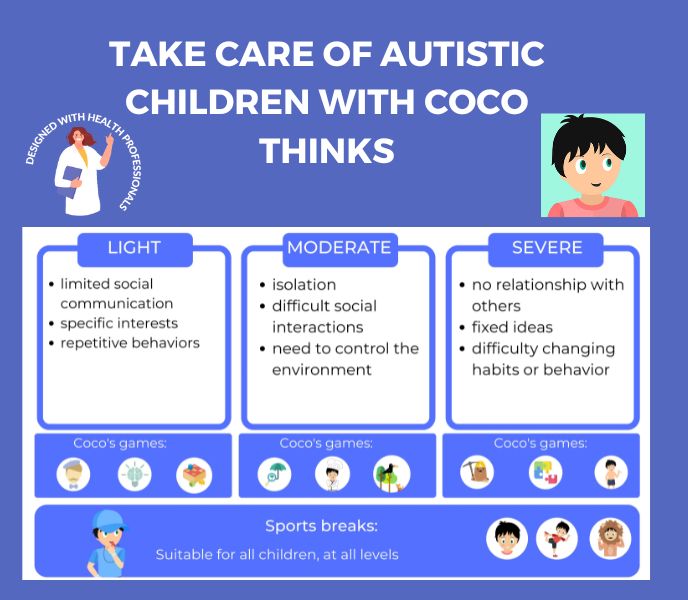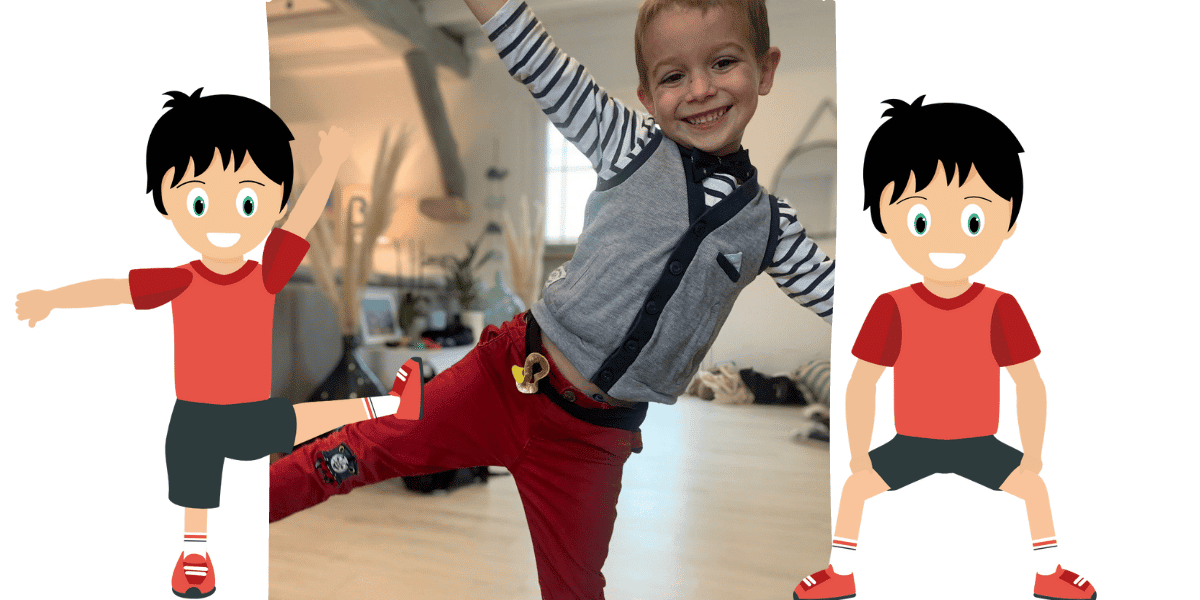Parents of children with autism have difficulties accepting the condition of their offspring. Added to this are the difficulties caused by each crisis. Learn how to calm your child during a crisis. Tips on how to do it smoothly.
1. Remain calm to calm the other
If you can’t control yourself in a crisis, it will be difficult to calm your child down. So, what can be done?
Avoid shouting
It is crucial for parents to refrain from allowing children with autism to imitate inappropriate behaviors. This underscores the importance of parents continuously working on their own behavior and emotional regulation. One fundamental step in this process is maintaining a sense of calm, even in the face of challenging situations or crises. Reacting with anger or frustration can exacerbate the situation, potentially escalating the child’s distress. Instead, parents can employ techniques such as breathing exercises to help manage their emotions effectively. Taking three deep breaths, for instance, can provide a moment of pause and release tension. As primary role models for their children, parents must demonstrate composure and self-control. By modeling calm and collected behavior, parents can effectively teach their children how to regulate their own emotions and responses. It is through these actions that parents can set a positive example for their children and cultivate an environment conducive to their emotional growth and development.
Adopt gentle techniques
It remains paramount for parents to prevent children with autism from imitating inappropriate behaviors. This highlights the ongoing need for parents to focus on their own behavior and emotional management. One pivotal aspect of this endeavor is maintaining composure, especially during challenging circumstances or crises. Reacting with anger or frustration may only exacerbate the situation, potentially heightening the child’s distress. Instead, parents can adopt strategies such as practicing breathing exercises to effectively manage their emotions. Engaging in simple techniques like taking three deep breaths can offer a moment of respite and alleviate tension.
Given their role as primary role models, parents must consistently demonstrate composure and self-control. By showcasing calm and collected behavior, parents can effectively instill these qualities in their children and impart valuable lessons on emotional regulation. Through these deliberate actions, parents not only set a positive example but also cultivate an environment conducive to their children’s emotional well-being and development. Thus, it is through such intentional efforts that parents can play a pivotal role in fostering their children’s emotional growth and nurturing a harmonious family dynamic.
2. Supporting the child with autism
The primary objective is to identify the root cause of the crisis experienced by your child with autism spectrum disorder. By maintaining a clear and composed mindset, you can swiftly address the situation and effectively calm your child. Understanding the triggers of the crisis enables you to implement appropriate strategies for de-escalation and support. Taking a proactive approach to managing challenging behaviors is essential for promoting your child’s well-being and fostering a sense of security and stability within the family dynamic.
He is in opposition
It’s important to recognize that opposition is a natural part of every child’s development, including those with autism. In such situations, it’s crucial not to get drawn into power struggles. Instead, take the time to observe and understand the child with autism to determine the best course of action. How is their opposition manifesting? While avoiding conflict, it’s important to show appreciation for your child’s unique qualities. Keep in mind that individuals with autism may require more time and maturity to grasp certain concepts; Despite potential challenges, parents should offer praise when their child follows instructions and exhibits desired behaviors, even if it may seem like they are not listening.
This can be difficult to accept at times. Maintaining open communication and practicing patience are key elements in building a strong and trusting relationship with your child. Through consistent efforts to understand and support your child, you can foster a positive environment for their growth and development.
Talking with the child
It’s essential to recognize that opposition is a normal aspect of every child’s development, including those with autism. In such instances, it’s crucial not to engage in power struggles. Instead, take the time to observe and understand the child with autism to discern the best approach. How is their opposition being expressed? While avoiding conflict, it’s important to acknowledge and appreciate your child’s unique qualities.
Keep in mind that individuals with autism may require additional time and maturity to comprehend certain concepts. Despite potential challenges, parents should offer praise when their child demonstrates obedience and displays desired behaviors, even if it seems like they may be ignoring instructions. This can be challenging to accept at times.
Maintaining open communication and practicing patience are vital components in establishing a genuine relationship of trust with your child; here’s a link if you want to know more about this section. Through consistent efforts to comprehend and support your child, you can create a positive environment conducive to their growth and development.
3. What can be done physically to soothe a child with autism?
Hugs, a massage, a playful activity… So many things that parents can initiate to relieve an autistic child in crisis.
Give him a massage to calm him down
A massage, when well executed, gives impressive results. It helps to evacuate muscular tension caused by excess stress. Acting in the best way ensures fruitful outcomes. It also serves as a communication tool with your autistic child. Here is an example of how you could process this massage:
- – In a quiet room, start by gently massaging her shoulders;
- Massaging the temples and forehead is also recommended to promote relaxation;
- Small pressures can still be applied to the child’s feet;
- Ensure the toddler is in a position conducive to relaxation, whether lying down or sitting;
- Avoid sudden movements and violent blows; the massage must be painless.
When performed effectively, massage can yield impressive results, particularly in alleviating muscular tension induced by excessive stress. It serves as a valuable communication tool with autistic children, fostering connection and relaxation. To begin, create a serene environment in a quiet room and initiate the massage gently, starting with the shoulders. Massaging the temples and forehead further enhances relaxation. Applying light pressure to the feet can also be beneficial. Ensure the child is in a comfortable position, either lying down or sitting, conducive to relaxation. Avoid abrupt movements or forceful pressure; the massage should be gentle and painless, aiming to promote a sense of calm and well-being for the child.
Fun activities to help him cope with crises
Specialists recognize the importance of offering a diverse range of activities or games to assist children with autism in managing their emotions effectively. Among these activities, music therapy emerges as a valuable tool. Music serves as a medium through which children can explore and discover emotions, providing a means of expression that transcends language barriers. By engaging with music, children with autism can learn to identify and comprehend emotions in a manner that may be challenging through verbal communication alone.
In addition to music therapy, experts have developed numerous specific games tailored to the unique needs of children on the autism spectrum. These games are designed to provide structured opportunities for emotional exploration and expression, fostering emotional intelligence and regulation skills. Furthermore, specialists often recommend incorporating small yoga exercises into the child’s routine. Yoga offers a holistic approach to emotional management, promoting relaxation, mindfulness, and body awareness.
Another promising technique endorsed by experts is cardiac coherence, which has shown promising results in promoting emotional well-being among individuals with autism. This technique involves rhythmic breathing exercises aimed at synchronizing heart rate variability, leading to increased calmness and emotional stability.
Moreover, in today’s digital age, there are various activities and apps, such as those found in the COCO app, specifically tailored to assist children with autism spectrum disorder in managing their emotions. These resources offer interactive and engaging experiences designed to support emotional regulation and development in a manner that is accessible and enjoyable for children with autism. By incorporating such activities and apps into the child’s routine, parents and caregivers can provide valuable support in helping their child navigate the complexities of emotions effectively.

Discover the COCO THINKS and COCO MOVES app

An educational and sports app for all children
The COCO THINKS and COCO MOVES app is a tablet and smartphone educational program suitable for children ages 5 to 10.
With more than 30 educational games, the child can work on all the cognitive functions acquired at school, such as logic, thinking, or planning, while enriching his vocabulary, and revising his mathematics.
COCO THINKS and COCO MOVES, the education and physical app
The COCO app imposes a sports break after 15 minutes of screen time. This allows them to air their brains, and then to be more focused!
Note that it is also possible to use the app only with sports activities, to adapt the games to your child. Personalize his experience and teach him to focus.

4. Reflexes to avoid
The adoption of good behaviours is necessary in the management of crises in children with autism. What actions should be avoided?
Do not scold him
It’s crucial for parents to address bad behavior or inappropriate attitudes directly when dealing with a child on the autism spectrum. Instead of giving attention to negative behaviors, focus on reinforcing positive behaviors through praise and encouragement. Avoid repeatedly yelling or scolding, as this can exacerbate the situation and lead to further distress for the child. Consistency and clarity are key when setting boundaries and expectations. Rather than solely emphasizing what not to do, redirect your energy towards reinforcing desirable behaviors and providing clear guidance. This positive approach fosters a supportive and constructive environment for the child’s development and well-being.
It’s important to recognize that scolding or harsh punishment is ineffective in bringing about meaningful change in a child with autism. Punitive measures often fail to address the underlying causes of behavioral challenges and may even exacerbate aggressive tendencies. Instead of relying solely on punishment, focus on understanding the triggers of the child’s behaviors and implementing proactive strategies to support their needs. While discipline may have a place in parenting, it should be applied judiciously and within a context that promotes learning and growth. By shifting towards a more empathetic and solution-oriented mindset, parents can better support their child’s development and foster positive behavioral outcomes.
Behaviors to avoid with a child with autism
When dealing with bad behavior or inappropriate attitudes from a child with autism spectrum disorder, it’s crucial for parents to address them promptly and appropriately. Rather than giving attention to negative behaviors, focus should be placed on reinforcing positive behaviors. Constantly reprimanding or yelling at the child will only exacerbate the situation and may lead to further distress. It’s essential to remain consistent and firm in your approach, setting clear boundaries and expectations for behavior.
Encourage positive reinforcement and praise for desirable actions, emphasizing a constructive and supportive approach to discipline; Avoiding unnecessary confrontations and redirecting attention towards positive interactions can help foster a harmonious environment and promote the child’s emotional well-being and development.
Other articles that might interest you:
Using Technology to Enhance Communication in Autism Speech Therapy
Autism Spectrum Disorder (ASD) presents unique challenges in communication, making speech therapy an essential...
Effective Autism Behavior Therapy: Improving Outcomes
Autism is a complex neurodevelopmental disorder that affects individuals in various ways. It is characterized by...
Autism Therapy at Home: Effective Strategies
Autism Spectrum Disorder (ASD) is a neurodevelopmental disorder that affects individuals in various ways. It is...






